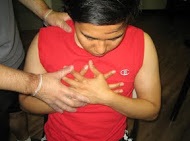
Heart disease continues to plague countries all over the world. In America alone, more than half a million people die each year because of a cardiac-related problem. Cardiac arrest is responsible for over a third of those deaths. There are even higher numbers for the cardiovascular disease cases diagnosed annually. With these dangerous numbers for CVDs, it is not surprising that most cardiac arrests actually happen outside of the hospital. People either don’t get seen by a doctor when they first start experiencing symptoms or worse, never have any warning symptoms at all before a heart attack.
This is why learning how to give cardiopulmonary resuscitation (CPR) is so important. Cardiac arrest can happen anywhere and to anyone – and people should know that a few minutes of chest compressions versus none at all can mean a world of difference in survival rates and patient outcomes.
Signing up for Honolulu CPR Training
To sign up for CPR and first aid training classes at Honolulu CPR, visit our website and use the online application form. The form is available all day and sends us your requests after you’ve finished submitting them. However, we only process requests during regular business hours so expect a confirmation e-mail or call from us by then.
Alternatively, you can also send us an e-mail or give us a call if you have any questions. We will get back to you as soon as we can.
Fighting Heart Disease
Because of the statistics of heart disease and cardiac arrest in the US and all over the world, fighting heart disease and preventing new cases have been the goal of different health organizations. The American Heart Association in particular, along with hundreds of affiliate training providers, trains millions of Americans each year in CPR and basic cardiorespiratory first aid.
CPR is a set of skills used to return the spontaneous circulation of blood in the body during cardiac arrest. Cardiac arrest is a medical term used to describe a condition where the heart has stopped beating. If CPR is not performed within the first few minutes, it can cause irreversible tissue death in the heart and in the brain. These set of skills include compressions, ventilation, and defibrillation.
First aid is also included in the Basic Life Support guidelines (by the AHA), specifically for respiratory emergencies like choking. Respiratory emergencies are dangerous because if too much stress caused by a lack of oxygen in the body, it can lead to a heart attack. Choking is primarily managed by using abdominal thrusts and back blows.
Training classes in CPR and first aid
- Basic CPR, AED, and first aid for the public- 4 hrs.
- Basic CPR, AED, and first aid for health care providers – 4.5 hrs.
- Basic Life Support for health care providers – 4.5 hrs. (re-certification 4 hrs.)
- Advanced Cardiac Life Support – 16 hrs. (re-certification 5 to 6 hrs.)
- Pediatric Advanced Life Support – 14 hrs. (re-certification 6 hrs. and 20 minutes/ 8 hrs. and 20 minutes)
